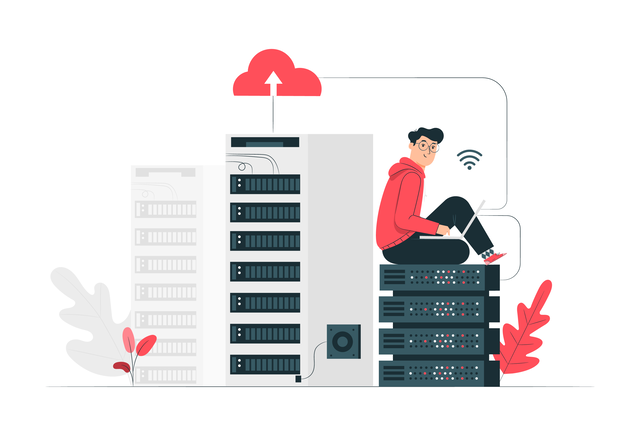In 2024, mobile app development is expected to continue its upward trend, with the global mobile app market projected to grow to $935 billion by 2024. As mobile apps become more complex and data-intensive, the importance of mobile app databases will only continue to grow. In fact, according to a recent survey, 77% of mobile app developers consider databases to be the most critical component of their mobile applications.
The increasing demand for personalized and interactive user experiences has also led to the development of more sophisticated and powerful mobile app databases.
Choosing the right database for mobile apps will be crucial in 2024, as it can significantly impact the performance, scalability, security, compatibility, and cost-effectiveness of mobile app development. In this blog, we will explore the latest trends and emerging mobile app databases in 2024, and why choosing the right database is critical for mobile app development success.

What does Mobile App Databases mean?
Mobile app databases refer to the structured data storage and retrieval systems that power mobile applications on various platforms such as iOS and Android. Mobile app databases are an essential part of mobile app development, providing a reliable and efficient way to store, manage, and retrieve data.
With the growth of the mobile app industry and the increasing demand for personalized and interactive user experiences, mobile app databases have become more sophisticated and powerful.
Why do you need a Mobile App Database?
1. Data Storage: Essentially you require a mobile app database to store all the necessary data and make it available almost rapidly. The database stores and centralizes large volumes of critical data, plus lets the mobile application read the data and modify the same for future usage.
2. Searching information: A mobile app database enables systematic storage of all the pivotal information. Arranging and indexing the data correctly makes it easier to search or retrieve the information quickly compared to disparate and disorganized data. Proper storage makes it easier for developers to search and locate the info in a database.
3. Security: All the stored data is sensitive and can’t be allowed to sit unprotected. A database takes measures to safeguard all the user and business data. The channel to access, transmit, and store the data must stay secure and safe. Both data at rest in a server and data in motion need high levels of authentication and encryption to protect them from unauthorized access.
4. Detecting errors: A mobile app database is capable of detecting errors, redundancies, and inconsistencies, something that can potentially create conflicts that lead to delays, customer dissatisfaction, and monetary losses. You need to work with clean data that is free of issues and highly reliable to create a frictionless experience on your mobile app.
7 Emerging Mobile App Database to use in 2024 and beyond
1. Firebase Realtime Database
Firebase Realtime Database is a cloud-hosted NoSQL database that allows developers to build real-time mobile and web applications. It provides real-time synchronization, offline support, and automatic data fetching, making it ideal for real-time chat apps, collaborative apps, and mobile gaming.
Key Features:
- Real-time syncing of data across multiple clients
- Offline access to data with automatic synchronization when reconnected
- Supports JSON data format
- Scalable, with built-in monitoring and analytics
Examples of apps using Firebase Realtime Database: TikTok, Shazam, and The Economist.
2. SQLite
SQLite is a lightweight relational database that is embedded within mobile applications. It is ideal for small applications that require an easy-to-use database engine with a small footprint.
Key Features:
- Embedded, serverless database engine
- Supports SQL syntax for querying and manipulation
- Lightweight and efficient, with small memory and disk footprint
- Cross-platform compatibility
Examples of apps using SQLite: WhatsApp, Instagram, and Uber.
3. Couchbase Lite
Couchbase Lite is a NoSQL embedded database designed for mobile and IoT devices. It provides offline data synchronization, real-time data access, and high-performance indexing, making it ideal for mobile applications that require high-performance and reliable data access.
Key Features:
- Supports offline-first and real-time synchronization
- Built-in conflict resolution and revision history
- Supports document-oriented data model with JSON format
- Native support for iOS, Android, and Xamarin platforms
Examples of apps using Couchbase Lite: Expedia, McGraw-Hill Education, and Whole Foods Market.
4. Realm
Realm is a mobile database designed for mobile and IoT devices. It provides a lightweight, fast, and scalable solution for storing data locally on mobile devices, making it ideal for mobile applications that require fast and reliable data access.
Key Features:
- Fast and efficient, with high performance and low latency
- Supports object-oriented data model with auto-updating properties
- Thread-safe and memory-efficient
- Cross-platform compatibility
Examples of apps using Realm: Square, Starbucks, and Zillow.
5. MongoDB Realm
MongoDB Realm is a mobile database designed for mobile and web applications. It provides a serverless database solution that is built on MongoDB and provides real-time data synchronization, offline data access, and automatic scaling, making it ideal for real-time collaborative apps, chat apps, and mobile gaming.
Key Features:
- Supports full-stack development with backend-as-a-service
- Real-time data synchronization and offline access
- Built-in integration with MongoDB database and Atlas cloud platform
- Supports serverless functions and webhooks
Examples of apps using MongoDB Realm: Cisco, Domino’s Pizza, and The Weather Channel.
6. Oracle Mobile Database
Oracle Mobile Database is a mobile database designed for Oracle’s mobile development platform. It provides a scalable, high-performance solution for storing and accessing data on mobile devices, making it ideal for enterprise mobile applications.
Key Features:
- Supports offline access with synchronization
- Scalable and reliable, with enterprise-grade security and performance
- Supports relational data model with SQL syntax
- Built-in integration with Oracle Database and cloud services
Examples of apps using Oracle Mobile Database: Coca-Cola, Marriott International, and Walmart.
7. Amazon DynamoDB
Amazon DynamoDB is a cloud-based NoSQL database that provides fast and scalable data access for web, mobile, and IoT applications. It is designed for high-availability and high-performance applications and provides automatic scaling, making it ideal for applications that require fast and reliable data access.
Key Features:
- Fully managed NoSQL database service
- Highly scalable and flexible, with automatic scaling and backups
- Low-latency and high-performance, with single-digit millisecond response times
- Supports document and key-value data models
Examples of apps using Amazon DynamoDB: Netflix, Airbnb, and Snapchat.
Different types of Mobile App Databases
1. Distributed: The data is stored in remote devices across geographically distant locations. The data sits on multiple computers, through replication or fragmentation, with the fragmentation being horizontal or vertical. This type of database is most common in hotel chains, multimedia apps, and corporate Information systems. The system periodically updates and synchronizes all the data. Plus, any deletes at one location will influence the data stored elsewhere.
2. Centralized: This database is stored, located, and updated in a single location. It is easier to access all the data. Plus, it’s easier to change, re-organize, mirror, and analyze the stored data. The easier data portability and database administration minimizes labor, costs, and extent of maintenance, besides maximizing data integrity and minimizing data redundancy. In a centralized database, it’s harder to retrieve lost data, and high traffic can result in bottlenecks.
3. Relational: Data sitting on one side often shows some degree of relationship with the data on the other side. Data entities can have connections amongst each other, and this requires the need for a relational model. It consists of a primary key, a foreign key, stored procedures, and an index for data management. You would need to specify queries to access tuples (row) and attributes (column) of two or more relations (table). A relational database offers flexibility and reduced redundancy.
4. End-user: The end-user database is generally used to compile critical information about current or prospective customers through cookies, registrations, or sign-ups. End-user databases hyper-personalize your online experience, promotions, and messaging in tandem with your stored information. This database simplifies data storage, extraction, and analysis for quick decision-making, due to all the relevant data sitting against the user’s name.
5. NoSQL: These are non-tabular databases that store data in stores information in JSON documents. Document databases, key-value stores, graph databases, and wide-column databases are all types of NoSQL databases. The flexible schemas, agile development, structures & semi-structured storage, extensive scaling, zero downtime, fast queries, and ease of use make it suitable for several use cases. These are used mainly in the financial, healthcare, and streaming industries.
The Importance of Choosing the right Database for Mobile Apps
Choosing the right database for mobile apps is crucial as mobile app development continues to grow and evolve. The right database can significantly impact the performance, scalability, and overall user experience of a mobile app. Here are some reasons why choosing the right database is important:
Performance:
The performance of a mobile app largely depends on its database. The right database can optimize data storage and retrieval, minimize latency, and ensure smooth user interactions. On the other hand, a poorly designed or unsuitable database can lead to slow performance, crashes, and other issues that can negatively impact user experience and engagement.
Scalability:
As mobile apps grow in popularity, their databases must also be able to scale to handle increased user traffic and data storage requirements. The right database can provide scalable solutions that allow mobile apps to grow and expand without performance issues or downtime.
Security:
User data security is a critical concern for mobile app developers, and choosing the right database can help ensure that user data is securely stored and protected from unauthorized access. The right database can offer features such as encryption, access control, and backup and recovery options that can help prevent data breaches and protect user privacy.
Compatibility:
Mobile app databases must be compatible with the mobile platform and programming language used in app development. The right database should be easily integrated with the app development environment and offer features that support the development of mobile apps.
Cost:
Choosing the right database can also impact the cost of maintaining and developing a mobile app. The right database can provide cost-effective solutions that reduce development time and maintenance costs, while ensuring optimal performance and scalability.




